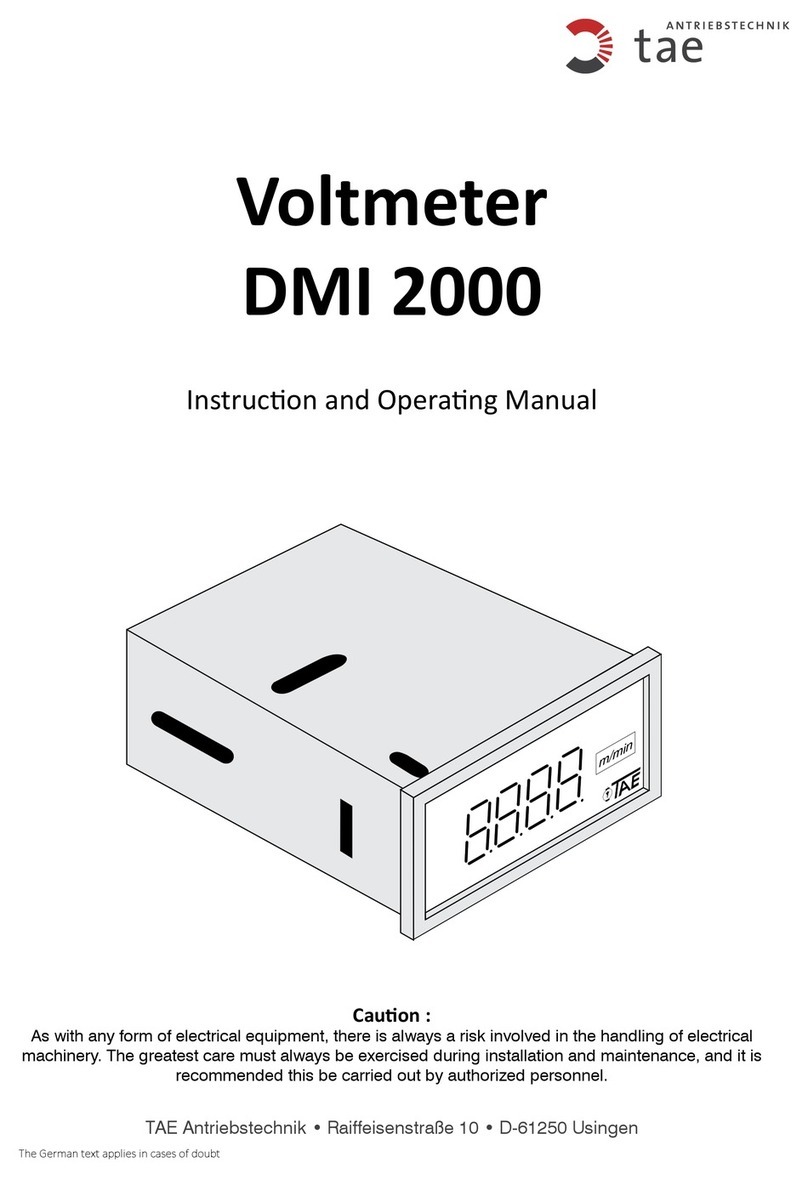Pikatron GmbH
division TAE Antriebstechnik
Raiffeisenstrasse 10
D-61250 Usingen
Tel.: -49/ 6081 583 445
Fax: -49/ 6081 583 123
MANUFACTURERS DECLARATION
The EMC-law of November 9th 1992 concerning the electromagnetic compatibility with reference to
the EMC-directive EMCD 89/336/EWG is a national law. This directive distinguishes between two
criteria: product components and product distribution.
According to these criteria our products are classified as follows:
-Product components: parts from suppliers which are inoperative on their own.
-Product distribution: not commonly available, sold to qualified persons.
The law states, that an EG-declaration of conformity as well as a CE-marking is not requested for
such components.
In order to meet the requirements of the EMC-directive we supply the following:
-Product related documents which describe the interference radiation of our products. This
information will enable the user to provide all necessary steps to meet the EMC-
requirements during planning and installation.
-EMC-specific components such as filters, chokes, shielded wiring, metal enclosures and others
are available from TAE. TAE will furthermore provide specific technical information concerning the
proper use of such components for their products in order to meet the requirements of the
harmonised standards.
It is the users responsibility to carry out our instrutions and to induce adequate provisions. The user is
also responsible that his machine and installation meets the requirements of the EMC-standards.
Based on the EMC-law and its corresponding standards we have carried out extensive
measurements at our premises. These tests have included our complete product line. With the use of
filters and proper wiring all our products meet the requirements of standard EN 50081-2 (sweep
radiation) and standard EN 55011 class A for industrial use.
The extent of the necessary modification depends on the individual product line. Our pamphlet "TAE
PRODUCTS AND EMC" provides information of the minimum requirements for our products in order
to meet the standard EN 50081-2. Our "GUIDE LINES FOR EMC-CONFORMAL INSTALLATION"
provide information for a properly and EMC-conformal installation.
These guidelines and recommendation for the use of electronic equipment are based on the following
standards:
DIN EN-50178 (VDE 0160:1994-11) Electronic equipment for use in electrical power installations
DIN VDE 0100 Erection of power installations
DIN VDE 0110 Dimensioning of clearance and creepage distances
DIN 40050 IP-Protections
DIN 50081/50082 EMC Basic Standards




























